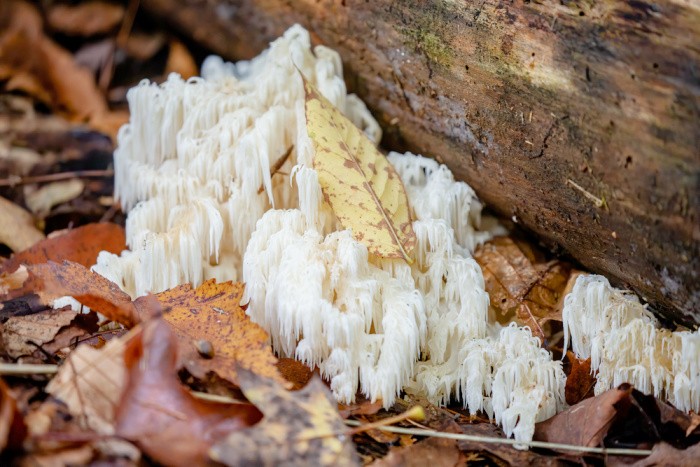Bronchitis: What You Need to Know
Bronchitis can show up quickly and unexpectedly. If you’ve ever had bronchitis, or know of someone who has, you know just how irritating and difficult it can make your breathing. Throw a fever with chills on top of that, and things can quickly go from bad to worse. Check out this resource on bronchitis: what you need to know. In case you missed my post, Why You Should Wash Your Hands Often
Bronchitis: What You Need to Know
Fortunately, there are a handful of remedies that can make your symptoms much more tolerable, and also a number of ways that you can lower your risk for contracting it. Here’s more about bronchitis and everything that you need to know about it. Please refer to the CDC for any additional information.
Remember, I am not a doctor, nurse, or anyone in the medical field. Please refer to your medical specialist with any of your health issues. In case you missed this post: Allergies: What You Need to Know
Basic Info About Bronchitis

Acute Bronchitis is an inflammation that takes place in our airways (bronchial tubes), which makes it difficult to breathe due to the restriction of airflow in our lungs. This is what is known as a chest cold and can be contagious. In most cases, it’s caused by a virus infection, while sometimes, it’s due to the fact that the patient is a smoker.
There are two different types of bronchitis, one being acute, and the other, chronic. Acute bronchitis is the most common of the two, while chronic bronchitis is a chronic lung disease that is much more severe. Chronic bronchitis will keep coming back, or may never leave the patient.
I just ordered two of these thermometers because I gave mine to my grandson who lives nearby. They finally came down in price. I don’t need anything fancy. Medical Thermometer
Interesting Facts ABout Bronchitis
The color of the mucus produced while being coughed up may be an indicator as to whether you have a viral or bacterial infection. If you are noticing that the mucus remains a clear color, you might have a viral infection. You may notice that the mucus begins to change to a yellow or green color. This may indicate that you also have a bacterial infection.
Nearly 95% of all bronchitis cases that happen to healthy non-smoking patients is caused by some type of viral respiratory infection, whether it’s influenza, parainfluenza, or adenovirus, among many others.
Chronic bronchitis happens more times than not, with patients that smoke. There is no cure for chronic bronchitis. But there are plenty of medications out there that can help relieve its symptoms.
What are the Symptoms?
The symptoms for bronchitis include a cough which may produce mucus, shortness of breath, chest discomfort, fatigue, nasal congestion, sore throat, and oftentimes chills with a low-grade fever.
Children may have a runny nose, a mild fever, and might gag or even vomit up mucus. The infection itself usually lasts for 3 to 10 days. Most bronchitis cases go away on their own, but it may take as much as 3 weeks for all the symptoms to disappear.
Treating Bronchitis
It’s important that you treat bronchitis so that your condition does not become even worse. Bronchitis that’s left unchecked, can lead to pneumonia, where the infection moves from your airways and into your lungs.
Unfortunately, antibiotics will have virtually no effect on bronchitis because they work to kill bacteria and not viral infections. However, there are certain prescriptions out there that will help alleviate the symptoms, but a doctor may tell you to try a number of the suggestions below. In case you missed this post, Natural Remedies That Really Work
- Make sure that you are getting plenty of rest.
- It’s also important to drink plenty of liquids (hot tea with lemon or honey will help a sore throat).
- Use ibuprofen or aspirin to help alleviate headaches, a fever, or aches and pains.
- Take hot showers to create steam that can clear the lungs and loosen mucus.
- Humidifiers help as well.
When to Consult Your Doctor
As mentioned earlier, bronchitis symptoms usually clear up on their own after a while. If you notice that you have a wheezing cough that won’t go away after 3 to 4 weeks, or shortness of breath, you may need to consult your family doctor.
There’s the possibility that it may be in the early developing stages of chronic bronchitis, which can be very dangerous. Please remember to listen to your gut, if your gut tells you to see a doctor, you probably should.
If you’re a little older, it’s especially important to consult your doctor as early as possible if you’re not sure whether it’s bronchitis or not. Pneumonia can progress rapidly if not diagnosed and treated in a reasonable amount of time.
Ways to Avoid Bronchitis
There’s no guarantee that you can avoid bronchitis altogether, but you certainly can lower your risk for contracting the infection by following these simple steps.
- Get the flu shot (please note, I am not advocating flu shots).
- Wash your hands often.
- Avoid using tobacco or being exposed to it.
- Drink lots of water.
- Stay clear of dust and chemical fumes.
- Dogs that shed may cause you to have allergies then Bronchitis.
- I quote WebMD “When it comes to pet allergies, cats and dogs get most of the blame. But they’re not the only pets that can make you cough and sneeze. Any animal with fur or hair can trigger an allergic reaction. May 12, 2019.”
- I quote the American Lung Association-Lung.org “Some people are allergic to pets or have asthma that is triggered by pet allergens. For these individuals, breathing animal allergens can make respiratory symptoms worse and lead to a decline in the ability of the lungs to function. … Other symptoms are itching, watery eyes, and eczema or rashes. Feb 12, 2020.”
Another Great Resource “Prep School Daily”:
Gumweed for Upper Respiratory Issues
The Medicinal Uses of Caffeine
Final Word
If you’ve ever had bronchitis, you know just how obnoxious that cough can be and how miserable the other symptoms make you feel. Just because acute bronchitis can typically go away on its own does not mean that it should be left untreated. Please keep eating fruits and vegetables to stay healthy. Oh, and keep washing your hands. May God bless this world, Linda
Copyright Images: Bronchitis AdobeStock_54940412 by Minerva Studio, Bronchitis AdobeStock_99816389 by Vitalii Vodolazskyi























Hi Linda,
Gumweed is one of the very best herbs for treating bronchitis and asthma. It grows wild all over the country. Caffeine is a bronchodilator, so it can help reduce coughing and wheezing. For those who avoid caffeinated drinks, caffeine is available in tablets. I’ve got articles on both on my blog.
Gumweed for Upper Respiratory Issues https://prepschooldaily.blogspot.com/2019/09/gumweed-for-upper-respiratory-issues.html
The Medicinal Uses of Caffeine https://prepschooldaily.blogspot.com/2019/10/the-medicinal-uses-of-caffeine.html
Have a great day!
Hi Jennifer, thanks for the links, I’m adding them to my post!!! Linda
Another old-fashioned remedy–mullein. The weed with a rosette of large, furry leaves and a tall spike of yellow flowers. The dried leaves can be made into tea. (I’ve also read of inhaling the smoke–but it never seemed to me that was a really great way to take it when you’re already coughing!)
I used to have nearly every cold morph into bronchitis and a cough (with, yeah, the green stuff!) that lasted for weeks. Vitamin E really seemed to be the turning point in helping prevent this, at least for me. Just be sure to get *real* vitamin E–the body doesn’t absorb the synthetic well, and it can be toxic as well (the studies “proving” that vitamin E is toxic used synthetic E!) You can tell the difference by looking at the ingredient list–Natural = d alpha-tocopherol; Synthetic = dl alpha-tocopheryl.
Another helpful prevention for me (haven’t had bronchitis since I’ve been using it so can’t say if it helps once you’ve actually got bronchitis!) is a salt/iodine “inhaler.” They make actual salt-pots, but I use an old half-pint school milk bottle–put a half-inch or so of real sea salt or Himalayan salt in the bottom, add a couple drops of ordinary first-aid iodine, and give it a shake (add a drop or two as needed, every day or two). Then put your nose to the top and inhale slowly and deeply 2-3 times (I do one nostril at a time, then both). You’ll smell the iodine “sea air.” The aerosolized iodine is supposed to help destroy any virus/bacteria that may be in your breathing passages. A bonus for me has been that if I’m a little stuffy (either allergy or a cold) it helps open things up.
Hi Rhonda, oh my gosh, this is the best comment ever! I learned a lot myself, thank you!! I get stuffy from allergies, I’m going to try this. Linda
Hello Linda,
Well thanks for this article on bronchitis I never had heard of Gum Weed before so Thanks again and I just ordered The Herbal Antivirals by Buhner I’m hoping to learn more on these virals and be able to help my family stay healthy. Thanks again
Hi Debbie, I need that book as well! Thanks, Linda
That’s a great book–just got it this summer!
Hi, Linda, I finally ordered your book today! I am feeling really anxious about the mess the world is in, but I know your book will give me a good plan that I can hold in my hands and follow. Thanks to you, my family will be as safe as possible no matter what happens in the future. God bless you.
Hi Roxanne, oh, thank you for ordering my book! That means so much to me. It’s one more way to be prepared. I never thought I would live to see what a mess our world has become. We just have to stay positive and hope we get through this mess. I just don’t know what to believe these days, I never thought that would ever cross my mind either. My heart aches for all the families out of work, it’s a true disaster for sure. God help us all, Linda